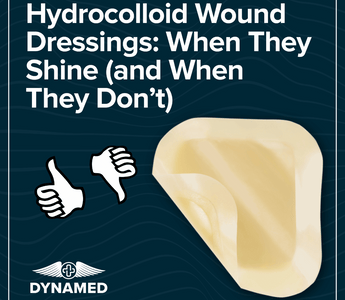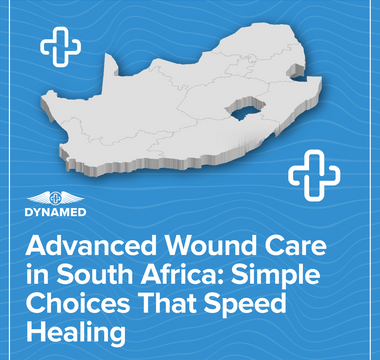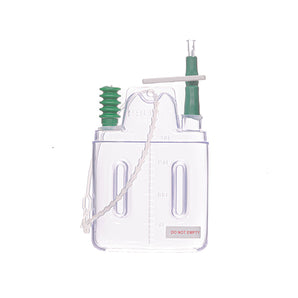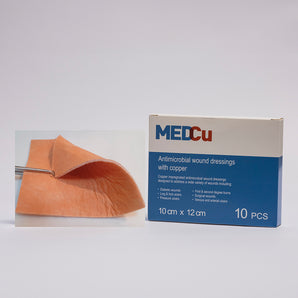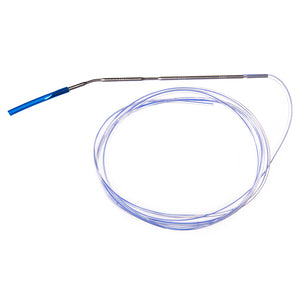Introduction
Not every wound is the same, and not every dressing should be used in the same way. Hydrocolloid wound dressings are among the most popular choices in South Africa because they’re flexible, cost-effective, and easy to apply. But like any medical solution, they have specific strengths and limitations. In this article, we’ll unpack how hydrocolloids work, when they are the right fit, and situations where another dressing type may be a better option.
Key Points (Quick Takeaways)
- Hydrocolloid wound dressings are ideal for moist wound healing and light-to-moderate exudate management.
- They work best on pressure ulcers, shallow burns, and post-surgical wounds.
- Do not use hydrocolloids on heavily exuding, infected, or necrotic wounds.
- They offer longer wear time, reducing dressing changes, especially useful in rural South African settings.
- Alternatives such as hydrogel, foam, silver, or copper dressings may be better for certain wounds.
What Is a Hydrocolloid Wound Dressing?
Hydrocolloids are flexible, self-adhesive dressings that form a gel when they come into contact with wound exudate. This gel creates a moist environment that supports tissue regeneration and speeds up healing.
Benefits of Hydrocolloids
- Maintain moist wound healing, which prevents scabbing and speeds up epithelialisation.
- Longer wear time (up to 7 days in some cases), reducing patient discomfort.
- Easy to apply and remove without causing trauma to new tissue.
When Hydrocolloid Dressings Shine
Pressure Ulcers
Hydrocolloids protect low-to-moderate exuding pressure sores, particularly in hospitals and long-term care facilities across South Africa.
Burns and Abrasions
For superficial burns and skin abrasions, hydrocolloids provide a protective barrier while encouraging faster healing.
Post-Surgical Wounds
Patients recovering from minor surgical procedures benefit from hydrocolloids, as the dressing seals out bacteria and reduces dressing change frequency.
When Hydrocolloid Dressings Don’t Work
Heavily Exuding Wounds
If a wound produces too much exudate, hydrocolloids can become overwhelmed, leading to leakage and skin maceration.
Infected Wounds
Hydrocolloids are occlusive, which means they trap moisture inside. This is beneficial for healing, but dangerous when infection is present because it can create the perfect environment for bacteria to spread.
Necrotic Wounds
For wounds requiring debridement, hydrocolloids aren’t the best option. Hydrogels or enzymatic dressings are often more effective here.
Comparing Hydrocolloids to Other Dressings
Hydrocolloid vs Hydrogel
Hydrocolloids manage exudate, while hydrogels are better for rehydrating dry or necrotic wounds.
Hydrocolloid vs Foam
Foam dressings absorb more fluid and are preferable for heavily exuding wounds.
Hydrocolloid vs Silver or Copper
Silver and copper dressings add antimicrobial protection, making them better for high-risk wounds, particularly in hospital wards.
Local Considerations in South Africa
Hydrocolloid dressings are particularly useful in South Africa’s rural and peri-urban areas where patients may not return for frequent follow-ups. Their longer wear time reduces the burden on both patients and clinics. Hospitals and procurement teams should ensure stock availability of hydrocolloids alongside other advanced wound care options to meet diverse clinical needs.
Conclusion
Hydrocolloid wound dressings are versatile, effective, and cost-friendly for specific wound types. They shine when used for pressure ulcers, burns, and post-surgical wounds, but fall short for infected, necrotic, or heavily exuding wounds. For procurement teams and clinicians in South Africa, the key is balancing hydrocolloids with complementary products like hydrogels, foams, and antimicrobial dressings to ensure the right tool is always on hand.
Dynamed Pharmaceuticals
Phone: 0861 00 00 43
Website: dynamed.co.za
Email (Sales): sales@dynamed.co.za
Email (Info): info@dynamed.co.za
Google Maps: Find us here
FAQs
1. What is a hydrocolloid wound dressing?
It’s a self-adhesive dressing that forms a gel on contact with wound fluid, creating a moist healing environment.
2. How long can a hydrocolloid dressing stay on?
Most hydrocolloids can remain in place for 3–7 days, depending on the wound and exudate levels.
3. Can hydrocolloid dressings be used on infected wounds?
No. Because they are occlusive, they can trap bacteria inside and worsen infections.
4. Are hydrocolloids suitable for burns?
Yes, for superficial burns. They protect the wound and help retain moisture for faster healing.
5. What are the disadvantages of hydrocolloid dressings?
They’re not effective for heavily exuding wounds, infected wounds, or wounds needing debridement.
6. Where can I source hydrocolloid wound dressings in South Africa?
Dynamed and other local ISO-certified suppliers provide hydrocolloid dressings to hospitals, clinics, pharmacies, and distributors across South Africa and the wider SADC region.

